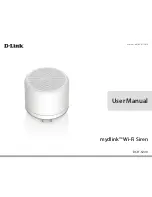
43-3
Catalyst 4500 Series Switch, Cisco IOS Software Configuration Guide - Cisco IOS XE 3.9.xE and IOS 15.2(5)Ex
Chapter 43 Configuring VRF-lite
VRF-lite Configuration Guidelines
illustrates the packet-forwarding process in a VRF-lite CE-enabled network.
•
When the CE receives a packet from a VPN, it looks up the routing table based on the input interface.
When a route is found, the CE forwards the packet to the PE.
•
When the ingress PE receives a packet from the CE, it performs a VRF lookup. When a route is
found, the router adds a corresponding MPLS label to the packet and sends it to the MPLS network.
•
When an egress PE receives a packet from the network, it strips the label and uses the label to
identify the correct VPN routing table. The egress PE then performs the normal route lookup. When
a route is found, it forwards the packet to the correct adjacency.
•
When a CE receives a packet from an egress PE, it uses the input interface to look up the correct
VPN routing table. If a route is found, the CE forwards the packet within the VPN.
To configure VRF, create a VRF table and specify the Layer 3 interface associated with the VRF. You
then configure the routing protocols in the VPN and between the CE and the PE. BGP is the preferred
routing protocol used to distribute VPN routing information across the providers’ backbone. The
VRF-lite network has three major components:
•
VPN route target communities—Lists all other members of a VPN community. You need to
configure VPN route targets for each VPN community member.
•
Multiprotocol BGP peering of VPN community PE routers—Propagates VRF reachability
information to all members of a VPN community. You need to configure BGP peering in all PE
routers within a VPN community.
•
VPN forwarding—Transports all traffic between all VPN community members across a VPN
service-provider network.
VRF-lite Configuration Guidelines
IPv4 and IPv6
•
A switch with VRF-lite is shared by multiple customers, and all customers have their own routing
tables.
•
Because customers use different VRF tables, you can reuse the same IP addresses. Overlapped IP
addresses are allowed in different VPNs.
•
VRF-lite lets multiple customers share the same physical link between the PE and the CE. Trunk
ports with multiple VLANs separate packets among customers. All customers have their own
VLANs.
•
VRF-lite does not support all MPLS-VRF functionality: label exchange, LDP adjacency, or labeled
packets.
•
For the PE router, there is no difference between using VRF-lite or using multiple CEs. In
, multiple virtual Layer 3 interfaces are connected to the VRF-lite device.
•
The Catalyst 4500 series switch supports configuring VRF by using physical ports, VLAN SVIs, or
a combination of both. You can connect SVIs through an access port or a trunk port.
•
A customer can use multiple VLANs as long because they do not overlap with those of other
customers. A customer’s VLANs are mapped to a specific routing table ID that is used to identify
the appropriate routing tables stored on the switch.
•
The Layer 3 TCAM resource is shared between all VRFs. To ensure that any one VRF has sufficient
CAM space, use the
maximum routes
command.
Summary of Contents for Catalyst 4500 Series
Page 2: ......
Page 4: ......
Page 2086: ...Index IN 46 Software Configuration Guide Release IOS XE 3 9 0E and IOS 15 2 5 E ...
















































